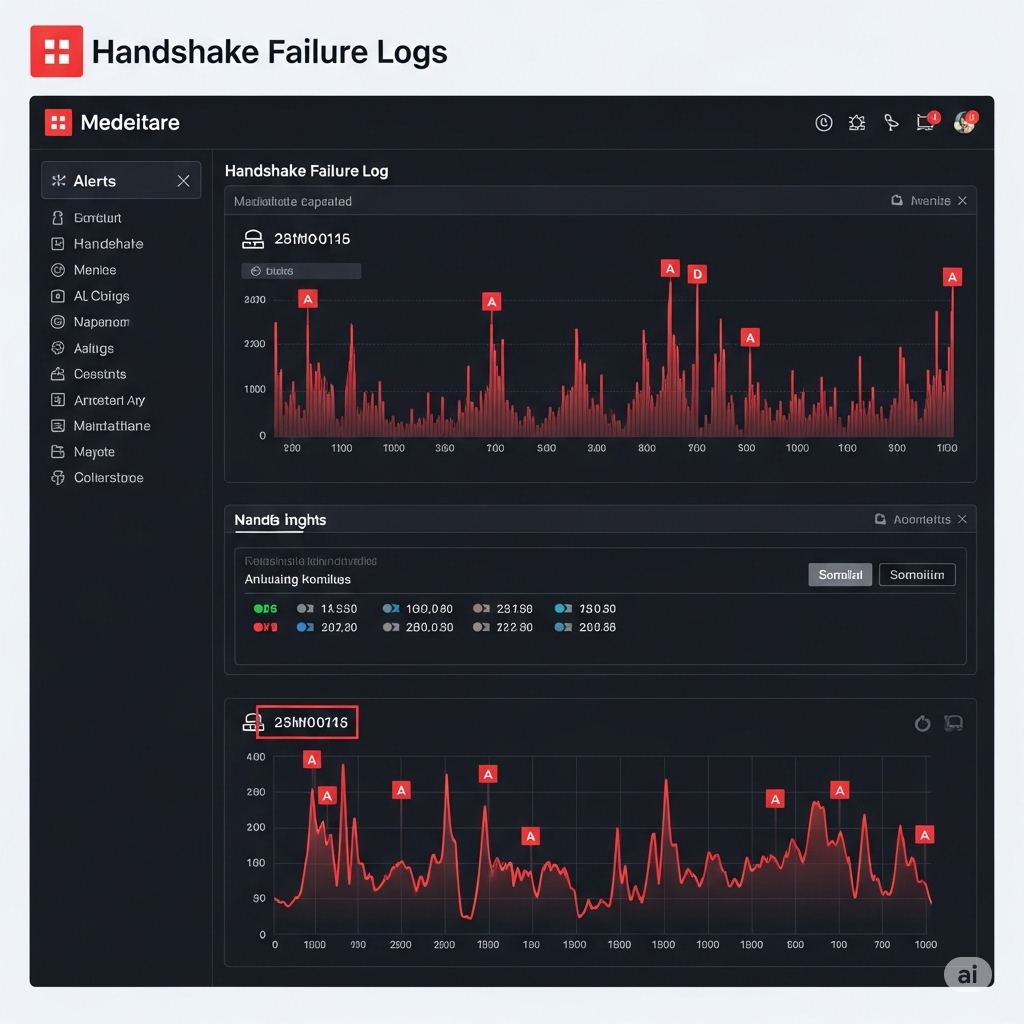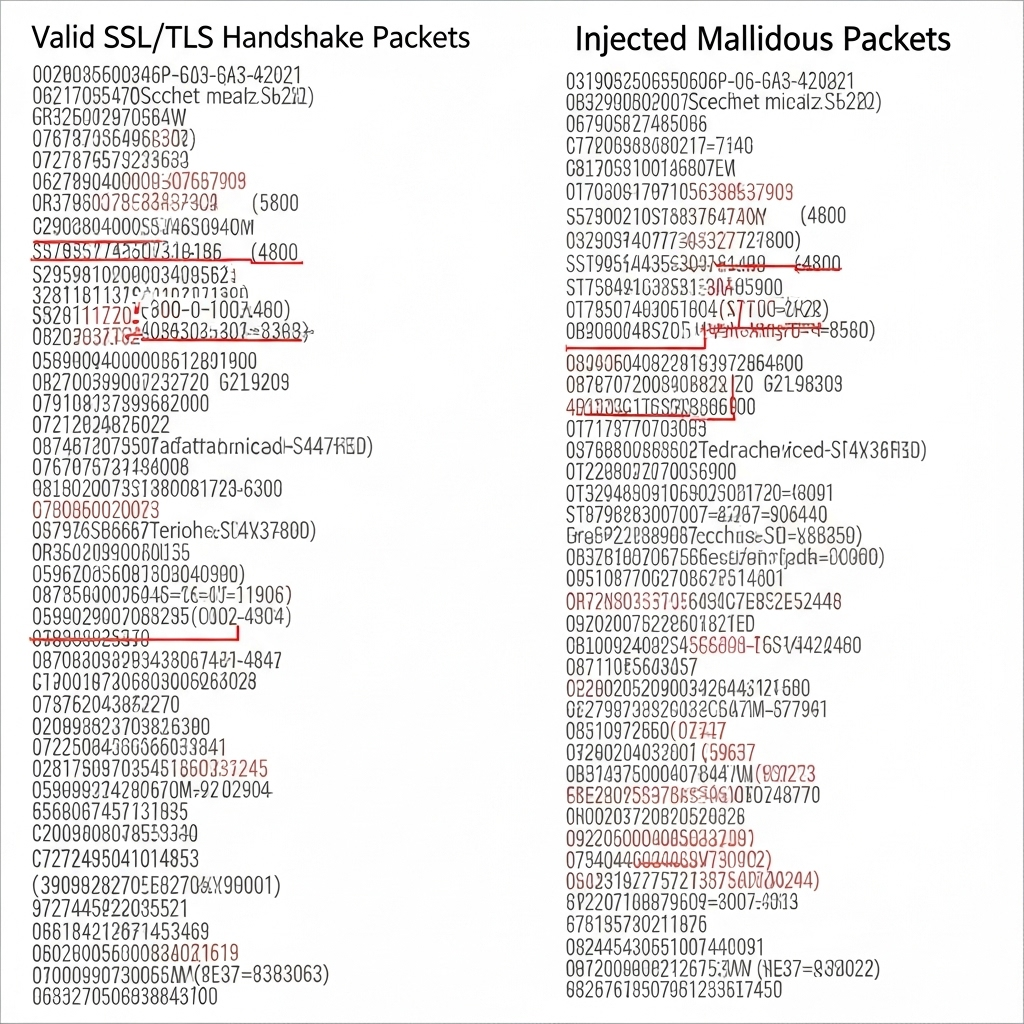Understanding SSL Handshake Injection in Modern Cybersecurity
What is an SSL Handshake and Why It Matters
The SSL handshake is a fundamental process that occurs when two systems, typically a client and server, establish a secure connection using SSL/TLS protocols. During this handshake, the client and server exchange cryptographic information, verify certificates, agree on encryption methods, and ultimately create a shared session key to encrypt communication.
This handshake process is crucial because it sets the foundation for encrypted communication. Without a proper handshake, the data exchanged could be exposed to eavesdropping or manipulation. The handshake involves several steps, such as version negotiation, cipher suite agreement, key exchange, and certificate validation. All of these steps must occur flawlessly and without interference.
How SSL Handshake Injection Works
SSL handshake injection is a type of attack in which a malicious actor inserts unauthorized or malformed data into the SSL handshake process. The goal is to interrupt the negotiation, manipulate the cryptographic exchange, or introduce forged certificates.
In a typical SSL handshake injection scenario, the attacker intercepts the initial handshake packets and then injects crafted packets that confuse or override the expected behavior. For example, the attacker might trick the server into accepting a different cipher suite or bypass certificate validation. Alternatively, injection can be used to downgrade the connection from TLS to SSLv3, allowing for the use of older and weaker encryption methods.
Why SSL Handshake Injection is Increasing in 2025
As more businesses transition to encrypted infrastructures and remote connections, SSL/TLS traffic volume has increased significantly. As a result, attackers have more opportunities to manipulate handshake processes, especially in environments that lack strict validation or rely on outdated protocols.
In 2025, the growing complexity of SSL implementations, coupled with legacy support for older TLS versions, creates opportunities for injection. Furthermore, the sophistication of MITM (man-in-the-middle) tools enables attackers to intercept and modify handshake packets more subtly than ever before.

SSL Handshake Injection in the Context of TLS Interception
Understanding TLS Interception Techniques
TLS interception is often used by enterprises to inspect SSL/TLS traffic for threats. It works by terminating the connection at a trusted proxy, decrypting the traffic, checking it, and then re-encrypting it before forwarding it. This process relies heavily on SSL handshakes.
However, this setup introduces a potential attack vector. If the proxy is not securely configured, an attacker could exploit the re-encryption phase or inject data during the handshake between the client and the proxy. This creates the illusion of a secure connection while giving the attacker visibility and control over the data.
How TLS Interception Enables SSL Handshake Injection
In environments where TLS interception is common, attackers can embed themselves between the client and the proxy, injecting forged handshake packets. If the system does not strictly validate certificate chains or allows outdated encryption, the attacker can manipulate the handshake outcome.
For example, injecting a fake “ServerHello” message with a compromised cipher suite can lead to insecure session keys. This can ultimately grant the attacker decryption access to the whole session.
SSL Handshake Injection vs. Traditional SSL Vulnerabilities
Key Differences from Other SSL Exploits
Traditional SSL vulnerabilities, such as POODLE or BEAST, rely on flaws in the protocol design. In contrast, SSL handshake injection manipulates the protocol’s execution rather than exploiting inherent flaws. This makes it more adaptable and more challenging for signature-based security tools to detect.
Unlike certificate spoofing, which involves forging a certificate to mimic a trusted source, handshake injection corrupts the process that checks those certificates. Thus, it can be used in conjunction with spoofing or as a standalone attack.
The Subtlety of Injection-Based Exploits
SSL handshake injection is often stealthy. Since handshake messages are typically small and occur only at session initiation, many intrusion detection systems overlook anomalies. Moreover, attackers can tailor the injection to mimic legitimate variations, making it difficult to identify without deep packet inspection.
Real-World Impacts of SSL Handshake Injection
Threats to Enterprise Systems and Data
Enterprise VPNs, cloud services, and API endpoints are particularly susceptible to these threats. Suppose an attacker successfully performs an SSL handshake injection on these systems. In such cases, they may gain unauthorized access or intercept confidential data, including login credentials, tokens, and personal information.
Injected handshakes can also cause service downtimes by confusing or crashing the SSL module in web servers, especially those with custom SSL stack implementations or modified handshake logic.
Potential for Cross-Protocol Attacks
An injected SSL handshake may redirect or manipulate application-level protocols. For instance, an attacker could manipulate handshake messages to trigger HTTP redirect loops or hijack WebSocket initialization. This amplifies the impact beyond simple session hijacking.
Preventing SSL Handshake Injection
Implementing Strict TLS Configuration
Using only modern versions of TLS (1.2 and 1.3), disabling fallback mechanisms, and restricting cipher suite selection are the first steps. These practices limit an attacker’s ability to manipulate the handshake process.
Certificate pinning on clients can prevent the acceptance of unauthorized certificates, even if the handshake appears valid. Similarly, enforcing mutual authentication ensures both the client and server present valid credentials.
Monitoring and Logging All Handshake Failures
Logging every handshake failure with detailed diagnostics allows security teams to analyze patterns. If injection attempts are occurring, failure logs will often show unexpected client hellos or non-standard cipher proposals.
Implementing handshake anomaly detection in firewalls or application security tools can provide real-time alerts and automated blocking.
How Certificate Spoofing Relates to SSL Handshake Injection
Weak Certificate Validation as an Enabler
SSL handshake injection often leverages weak or missing certificate validation. If a system accepts self-signed certificates without strict validation, injected handshakes carrying spoofed certificates will succeed.
Systems should enforce OCSP (Online Certificate Status Protocol) checks and disallow the use of expired or weakly signed certificates. These steps prevent attackers from injecting forged credentials during the handshake.
Defending Against Certificate-Based Injection
Certificate transparency logs, HSTS (HTTP Strict Transport Security), and DANE (DNS-based Authentication of Named Entities) help protect against forged or injected certificates. Combining these mechanisms with hardened handshake processes significantly reduces risk.

Tools Used for SSL Handshake Injection in 2025
Popular MITM Frameworks and Their Capabilities
Advanced tools like mitmproxy, Bettercap, and SSLsplit are frequently used to perform SSL handshake injection in penetration testing and real-world attacks. These tools can pause, manipulate, and replay handshake messages.
They support granular packet tampering and real-time manipulation of cipher proposals, certificate chains, and key exchange parameters, making them powerful and dangerous if used maliciously.
Importance of Proper Network Segmentation
Preventing internal threats from using these tools requires strict network segmentation. Limiting access to SSL/TLS termination points and applying application-layer filtering makes it harder for attackers to reach vulnerable targets.
Mitigating SSL Handshake Injection in Web Applications
Best Practices for Web Developers
Developers should utilize modern TLS libraries, enforce strict certificate validation, and refrain from custom implementations of SSL/TLS. Modern libraries, such as OpenSSL 3.x or BoringSSL, already implement several safeguards against injection.
Additionally, developers should validate all client certificate chains, even if TLS offloading is used, and ensure that edge proxies forward complete and authentic handshake details.
Protecting Web APIs and Mobile Apps
Mobile apps should not rely on system-wide SSL configuration. Instead, they must implement custom pinning and perform strict hostname validation. Web APIs must reject clients with weak or manipulated cipher proposals during the handshake process.
The Future of SSL Handshake Injection Defense
AI-Based Handshake Anomaly Detection
AI and machine learning are increasingly used to detect handshake injection attempts. These systems can learn standard handshake patterns and identify injected variations in real-time.
By continuously updating their detection models, AI-based tools can stay ahead of attackers who develop new injection techniques.
Industry Response and Evolving Standards
Standardization bodies are working to deprecate insecure TLS versions, improve handshake resilience, and enforce stricter validation processes. Future TLS versions may include built-in countermeasures against known injection vectors.
Until then, proactive system hardening, vigilant monitoring, and ongoing training remain the best defense.
Conclusion: Securing Your Systems from SSL Handshake Injection
SSL handshake injection poses a growing threat in an increasingly encrypted digital world. While it’s not the most well-known attack vector, its stealth and effectiveness make it a top concern for security professionals in 2025. Organizations must harden their TLS configurations, monitor handshake behavior, and educate teams about emerging injection tactics.
Combining technical defenses with organizational awareness is the only path to securing communication channels and preventing catastrophic breaches.













